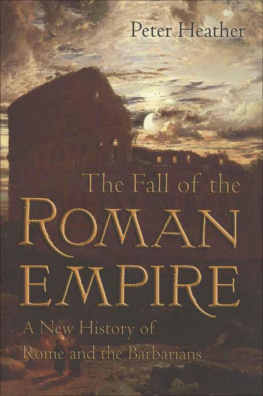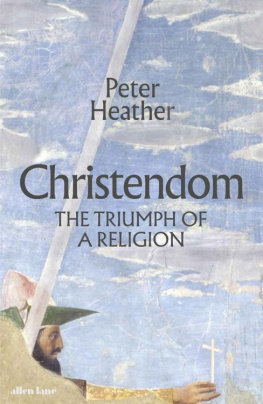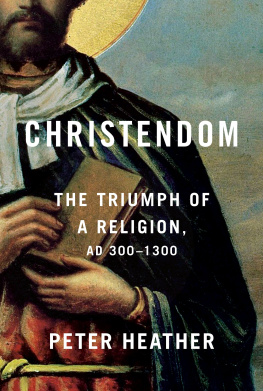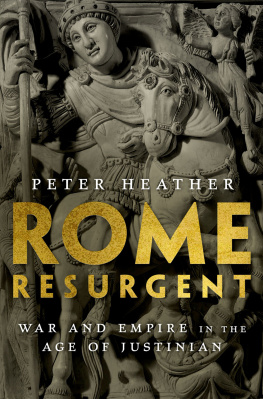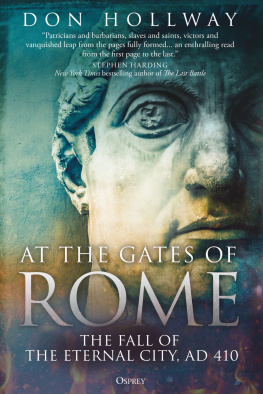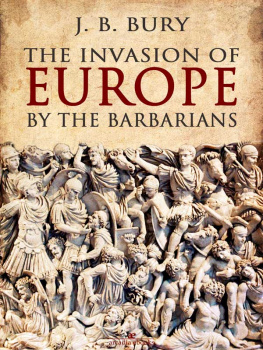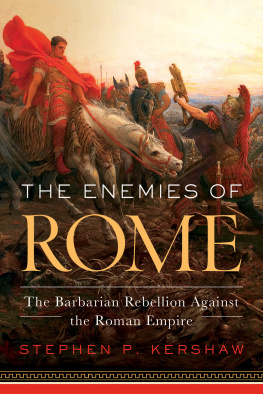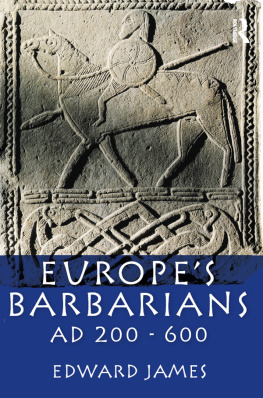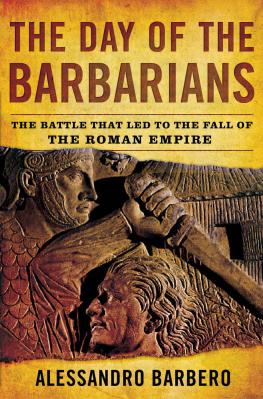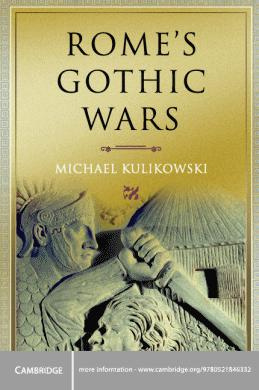Praise for The Fall of the Roman Empire
Like a late Roman emperor, Heather is determined to impose order on a fabric that is always threatening to fragment and collapse into confusion; unlike most late Roman emperors, he succeeds triumphantly.The Times of London
A rich and dramatic synthesis of the latest research on Gibbons old story. The drama of Mr. Heathers book lies not just in the world-changing story he has to tell, but in his behind-the-scenes view of how historians work. Like a master detective, Mr. Heather employs the most various techniqueseverything from pollen sampling to archaeology to literary criticismto wring the truth from the reticent past.... What Mr. Heather offers is not easy analogies but a realization of the complex strangeness of the pastthe achievement of a great historian.Adam Kirsch, New York Sun
Gibbons awful revolutionthe decline and fall of the Roman Empire in the Weststill casts a pall. Yet, as Peter Heathers brilliant mixture of rapid flowing narrative and deeply thought analysis fully brings out, it still exerts a pull too. Lepcisgate, Alarics Goths, and Attilas Huns are all thrown into Heathers melting pot along with Roman imperial aims and mismanagement. The outcome is a conclusion Heather finds pleasingand Gibbon would not have despisedthat Roman imperialism was ultimately responsible for its own demise.Paul Cartledge, University of Cambridge
To a period that has often appeared as impenetrable as it is momentous, Peter Heather brings a rare combination of scholarship and flair for narrative. With this book, a powerful searchlight has been shone upon the shadow-dimmed end of Romes western empire.Tom Holland, author of Rubicon: The Last Years of the Roman Republic
Deftly covering the necessary economic and political realities of decline and fall, Heather also presents the stories and the characters of this tumultuous epoch, in a colorful and enthralling narrative.The Independent
The Fall of the
Roman Empire
A New History of
Rome and the Barbarians
PETER HEATHER


Oxford University Press, Inc., publishes works that further Oxford Universitys objective of excellence in research, scholarship, and education.
Oxford New York
Auckland Cape Town Dar es Salaam Hong Kong Karachi
Kuala Lumpur Madrid Melbourne Mexico City Nairobi
New Delhi Shanghai Taipei Toronto
With offices in
Argentina Austria Brazil Chile Czech Republic France Greece
Cuatemala Hungary Italy Japan Poland Portugal Singapore
South Korea Switzerland Thailand Turkey Ukraine Vietnam
Copyright 2006 by Peter Heather
First published in 2005 by MacMillan, an imprint of Pan Macmillan, Ltd.
Published by Oxford University Press, Inc., 2006
198 Madison Avenue, New York, New York 10016
www.oup.com
First issued as an Oxford University Press paperback, 2007
ISBN 978-0-19-532541-6
Oxford is a registered trademark of Oxford University Press
All rights reserved. No part of this publication may be reproduced, stored in a retrieval system, or transmitted, in any form or by any means, electronic, mechanical, photocopying, recording, or otherwise, without the prior permission of Oxford University Press.
The Library of Congress has cataloged the hardcover edition as follows:
Heather, P. J. (Peter J.)
The fall of the Roman Empire: a new history of Rome and the barbarians / Peter Heather.
p. cm.
Includes bibliographical references and index.
ISBN-13: 978-0-19-515954-7
1. RomeHistoryEmpire, 284476.
2. Rome HistoryGermanic Invasions, 3rd-6th centuries.
I. Title.
DG311.H43 2005
937.09dc22
2005047345
Photographic Acknowledgments
AKG Images: .
7 9 8
Printed in the United States of America
on acid-free paper
CONTENTS
PART ONE
PAX ROMANA
PART TWO
CRISIS
PART THREE
FALL OF EMPIRES
Maps
Acknowledgements
The contract for this project was signed only about four years ago, but there is a very real sense in which I have been writing this book for much of the nearly twenty-five years I have been engaged in research on matters Roman and barbarian. In that sense, there really are too many people for me to thank and acknowledge from everyone who has taught me, especially my DPhil supervisors James Howard-Johnston and John Matthews, to all the friends and colleagues from whom I have learned so much, both in London and Oxford, to all the long-suffering students who have put up so cheerfully both with different versions of the various arguments on which this book rests and my delight in really dreadful puns. And although I would lay intellectual claim to some of the key observations and connections which knit this book together, the narrative also reflects my understanding of the general (and sometimes more particular) significance of the entire historical tradition in which I work. My debt to the scholarship and intellect of others is enormous and I would like to make this point explicit here, as the constraints of writing this book for a more general audience mean that the notes do not always fully acknowledge my intellectual debts. I am strongly aware, however, that they exist, and would like in particular to thank all the colleagues and friends who proved such stimulating company in the first half of the 1990s, when I was lucky enough to learn a huge amount from participating in the European Science Foundations Transformation of the Roman World project. More specifically, I would like to thank Jason Cooper, my editor at Macmillan, whose wise advice has sustained me throughout, Sue Phillpott, my copy-editor, who put in a huge amount of work on my behalf, and all the friends who have listened to, read, and offered advice on all or part of what follows. Not least, I owe more than I can begin to calculate to my family who always cheer me up when Im too miserable to carry on writing, and to the dog and cats the need to pay their food bills keeps me at my desk when I would long since have been out enjoying myself.
INTRODUCTION
THE ROMAN EMPIRE was the largest state western Eurasia has ever known. For over four hundred years it stretched from Hadrians Wall to the River Euphrates, transforming the lives of all the inhabitants within its frontiers and dominating landscapes and peoples for hundreds of kilometres beyond. Interconnected fortress systems, strategic road networks and professional, highly trained armies both symbolized and ensured this domination, and Roman forces were not averse to massacring any neighbour who stepped out of line. The opening scenes of the 2000 blockbuster Gladiator are based on the victories of Marcus Aurelius over the Marcomanni, a Germanic tribe of south-central Europe, in the third quarter of the second century. Two hundred years later, the Romans were still at it. In 357, 12,000 of the emperor Julians Romans routed an army of 30,000 Alamanni at the battle of Strasbourg.
But within a generation, the Roman order was shaken to its core and Roman armies, as one contemporary put it, vanished like shadows. In 376, a large band of Gothic refugees arrived at the Empires Danube frontier, asking for asylum. In a complete break with established Roman policy, they were allowed in, unsubdued. They revolted, and within two years had defeated and killed the emperor Valens the one who had received them along with two-thirds of his army, at the battle of Hadrianople. On 4 September 476, one hundred years after the Goths crossed the Danube, the last Roman emperor in the west, Romulus Augustulus, was deposed, and it was the descendants of those Gothic refugees who provided the military core of one of the main successor states to the Empire: the Visigothic kingdom. This kingdom of south-western France and Spain was only one of several, all based on the military power of immigrant outsiders, that emerges from the ruins of Roman Europe. The fall of Rome, and with it the western half of the Empire, constitutes one of the formative revolutions of European history, and has traditionally been seen as heralding the end of the ancient world and the start of the Middle Ages. Like the Renaissance, the Reformation and the Industrial Revolution, it changed the world for ever.
Next page
